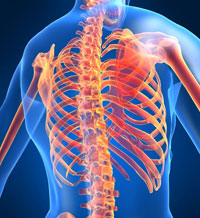Phone: 813.792.4804
Nerve Conduction Study & EMG
 Electromyography (EMG) is a technique for evaluating and recording the activation signal of muscles. EMG is performed using an instrument called an electromyograph, to produce a record called an electromyogram. An electromyograph detects the electrical potential generated by muscle cells when these cells are both mechanically active and at rest. The signals can be analyzed in order to detect medical abnormalities or analyze the biomechanics of human or animal movement.
Electromyography (EMG) is a technique for evaluating and recording the activation signal of muscles. EMG is performed using an instrument called an electromyograph, to produce a record called an electromyogram. An electromyograph detects the electrical potential generated by muscle cells when these cells are both mechanically active and at rest. The signals can be analyzed in order to detect medical abnormalities or analyze the biomechanics of human or animal movement.
Measuring the electrical activity in muscles and nerves can help find diseases that damage muscle tissue (such as muscular dystrophy) or nerves (such as amyotrophic lateral sclerosis or peripheral neuropathies). EMG and nerve conduction studies are often done together to give more complete information.
EMG is used to diagnose two general categories of disease: neuropathies and myopathies
Neuropathic disease has the following defining EMG characteristics:
- An action potential amplitude that is twice normal due to the increased number of fibres per motor unit because of reinnervation of denervated fibres.
- An increase in duration of the action potential.
- A decrease in the number of motor units in the muscle (as found using motor unit number estimation techniques).
Myopathic disease has these defining EMG characteristics:
- A decrease in duration of the action potential.
- A reduction in the area to amplitude ratio of the action potential.
- A decrease in the number of motor units in the muscle (in extremely severe cases only).
Because of the individuality of each patient and disease, some of these characteristics may not appear in every case.
Abnormal results may be caused by the following medical conditions (please note this is nowhere near an exhaustive list of conditions that can result in abnormal EMG studies):
- Alcoholic neuropathy
- Axillary nerve dysfunction
- Becker's muscular dystrophy
- Brachial plexopathy
- Carpal tunnel syndrome
- Centronuclear myopathy
- Cervical spondylosis
- Charcot-Marie-Tooth disease
- Chronic Immune Demyelinating Poly[radiculo]neuropathy (CIDP)
- Common peroneal nerve dysfunction
- Denervation (reduced nervous stimulation)
- Dermatomyositis
- Distal median nerve dysfunction
- Duchenne muscular dystrophy
- Facioscapulohumeral muscular dystrophy(Landouzy-Dejerine)
- Familial periodic paralysis
- Femoral nerve dysfunction
- Fields condition
- Friedreich's ataxia
- Guillain-Barre
- Lambert-Eaton Syndrome
- Mononeuritis multiplex
- Mononeuropathy
- Motor neurone disease
- Multiple system atrophy
- Myasthenia gravis
- Myopathy (muscle degeneration, which may be caused by a number of disorders, including muscular dystrophy)
- Myotubular myopathy
- Neuromyotonia
- Peripheral neuropathy
- Poliomyelitis
- Polymyositis
- Radial nerve dysfunction
- Sciatic nerve dysfunction
- Sensorimotor polyneuropathy
- Sleep bruxism
- Spinal stenosis
- Thyrotoxic periodic paralysis
- Tibial nerve dysfunction
- Ulnar nerve dysfunction
EMG signals are used in many clinical and biomedical applications. EMG is used as a diagnostics tool for identifying neuromuscular diseases, assessing low-back pain, kinesiology, and disorders of motor control. EMG signals are also used as a control signal for prosthetic devices such as prosthetic hands, arms, and lower limbs.
Nerve Conduction Study NCS
A nerve conduction study (NCS) is a test commonly used to evaluate the function, especially the ability of electrical conduction, of the motor and sensory nerves of the human body.
Nerve conduction velocity (NCV) is a common measurement made during this test. The term NCV often is used to mean the actual test, but this may be misleading since velocity is only one measurement in the test suite.
Nerve conduction studies are used mainly for evaluation of paresthesias (numbness, tingling, burning) and/or weakness of the arms and legs. The type of study required is dependent in part by the symptoms presented. A physical exam and thorough history also help to direct the investigation. Some of the common disorders which can be diagnosed by nerve conduction studies are:
- Peripheral neuropathy
- Carpal tunnel syndrome
- Ulnar neuropathy
- Guillain-Barré syndrome
- Facioscapulohumeral muscular dystrophy
- Spinal disc herniation
The interpretation of nerve conduction studies is complex, but in general, different pathological processes result in changes in latencies, motor and/or sensory amplitudes, or slowing of the conduction velocities to differing degrees. For example, slowing of the NCV usually indicates there is damage to the myelin. Another example, slowing across the wrist for the motor and sensory latencies of the median nerve indicates focal compression of the median nerve at the wrist, called carpal tunnel syndrome. On the other hand, slowing of all nerve conductions in more than one limb indicates generalized sick nerves, or generalized peripheral neuropathy. People with diabetes mellitus often develop generalized peripheral neuropathy.
If you want to find out more about Nerve Conduction Study & EMG Contact Us today for an appointment.